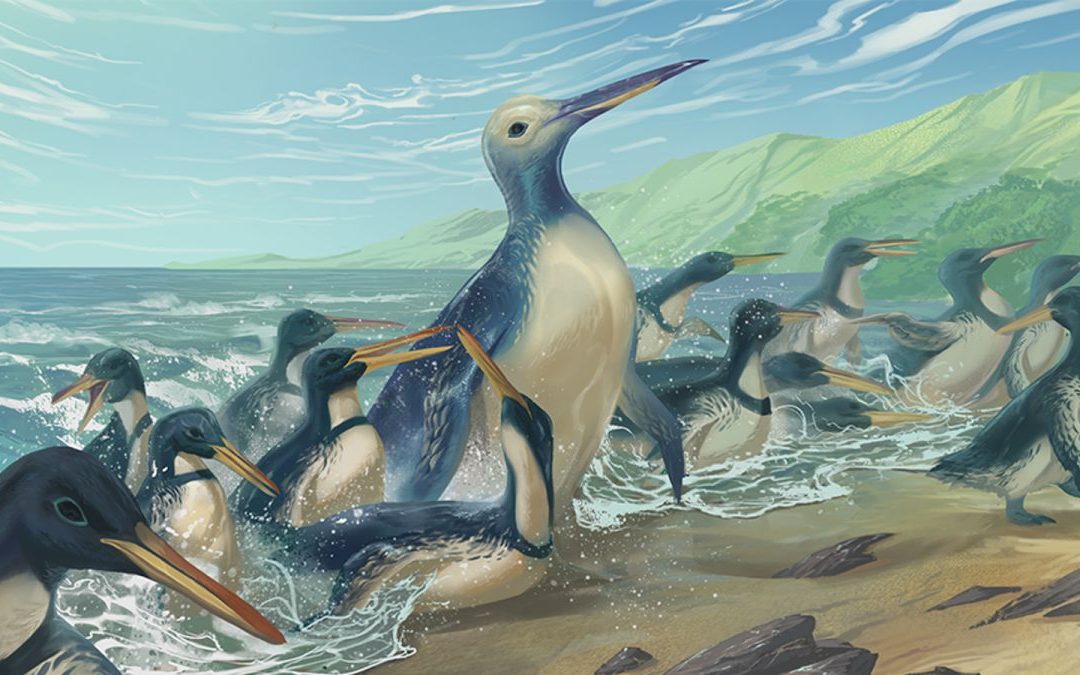It’s a scene from the distant past: a beach on New Zealand’s South Island, teeming with giant penguins. The largest of them all, Kumimanu fordycei, towers over its peers, weighing in at an incredible 340 pounds. This behemoth of a bird, along with another newly discovered species, Petradyptes stonehousei, is the largest penguin ever found on Earth.
A recent study published in the Journal of Paleontology has revealed the remarkable fossilized remains of these two species. Dating back to between 59.5 million and 55.5 million years ago, the bones of these ancient birds were found alongside eight other specimens inside beach boulders in North Otago. Scientists estimated the weight of the two newfound species based on the size and density of their bones compared with those of modern penguins.
Kumimanu fordycei was a true giant, weighing more than three times that of a living emperor penguin. For comparison, the average 20-year-old man in the U.S. weighs 198 pounds. And, despite not having a near-complete skeleton, the researchers were able to determine that Petradyptes stonehousei weighed around 110 pounds.
The two new species were likely among some of the first ancient penguins. The discovery could shed light on how the group evolved over time. The new species had “relatively primitive flipper bones,” said study first author Daniel Ksepka, a palaeontologist and curator at the Bruce Museum in Greenwich, Connecticut.
The enormous size of K. fordycei shows that gigantism evolved early on in the penguin lineage. Penguins likely lost the ability to fly in favor of swimming around 60 million years ago, not long before the new species likely emerged. The unique environmental conditions of ancient New Zealand played a key role in the emergence and success of giant penguins.
K. fordcyei may be the largest known penguin so far, but it’s possible that even larger birds roamed New Zealand. What caused their extinction is still an “unresolved question,” but it is likely that the enormous birds were eventually outcompeted by marine mammals of similar size.
This incredible discovery is a fascinating glimpse into the distant past, and a reminder of the incredible diversity of wildlife that once called New Zealand home.
Source: www.livescience.com
